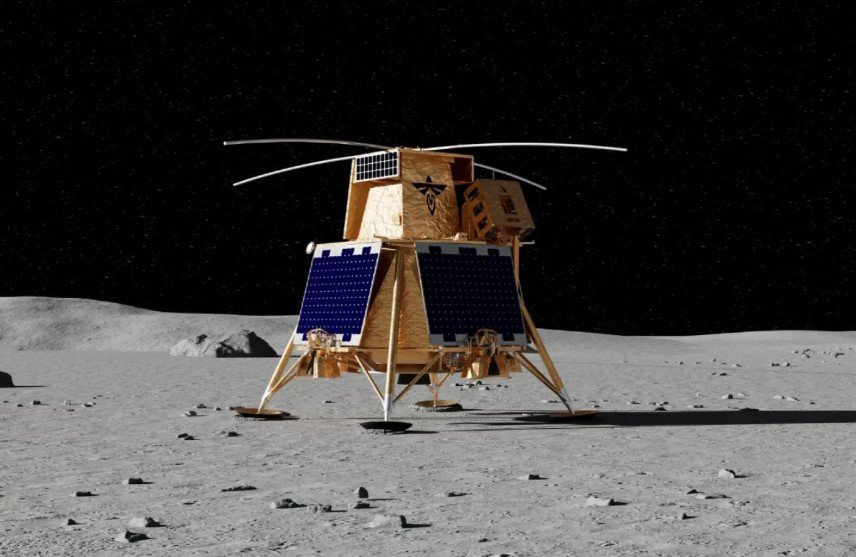A newly released image has confirmed that the Athena Moon lander, operated by Intuitive Machines, suffered a major setback upon reaching the lunar surface. The spacecraft, which landed on March 6 near the Moon’s south pole, was found lying on its side, roughly 820 feet from its intended destination at Mons Mouton.
A Harsh Lunar Landing
From the moment Athena touched down, there were signs of trouble. The lander made it to the Moon, but it failed to stay upright. That single issue proved catastrophic for its mission, preventing most of its scientific instruments from operating properly.
The newly surfaced photo provides a stark look at Athena’s predicament. The image captures a sloping lunar crater, its rugged terrain bathed in a faint sliver of sunlight. A crescent Earth is visible in the background, a reminder of the immense distance between mission control and the stranded spacecraft.
Intuitive Machines, in a statement, acknowledged that Athena will not recover. “With the direction of the sun, the orientation of the solar panels, and extreme cold temperatures in the crater, Intuitive Machines does not expect Athena to recharge,” the company said. “The mission has concluded, and teams are continuing to assess the data collected throughout the mission.”

Setback for NASA’s Commercial Lunar Plans
Athena’s failure adds to growing concerns about NASA’s Commercial Lunar Payload Services (CLPS) program, which aims to cut costs by outsourcing lunar missions to private companies. Of the four CLPS missions launched so far, only one—Firefly Aerospace’s Blue Ghost lander—has successfully met its science objectives without significant issues.
The track record so far isn’t encouraging:
- Intuitive Machines’ Odysseus lander also tipped over upon landing last year.
- Astrobotic Technology’s Peregrine lander failed to reach the Moon due to a propulsion issue.
- Athena, the second Intuitive Machines lander, has now suffered the same fate as Odysseus.
The repeated failures highlight the difficulties of landing on the Moon, even with modern technology. Unlike previous government-led missions, CLPS relies on commercial providers to execute these high-risk operations, and the results have been mixed at best.
Market Reaction and Financial Impact
The failure had immediate financial consequences for Intuitive Machines. The company’s stock plummeted by 20% on Thursday following news of the mishap, extending losses into Friday as shares dipped below $9. Just before the landing, the stock had been trading at over $13.
Investors had high hopes for Intuitive Machines, one of the key players in NASA’s lunar program. But with two consecutive landers tipping over upon touchdown, confidence is starting to erode. The company must now address serious concerns about its lander design and reliability before attempting another mission.
NASA Remains Optimistic Despite Challenges
Despite the setback, NASA officials are trying to focus on the bigger picture. Nicola Fox, associate administrator for NASA’s science mission directorate, emphasized that these commercial partnerships are still valuable learning opportunities.
“We knew from the beginning that these missions would be risky,” Fox said. “Every attempt, successful or not, helps us refine our approach and improve our technology for future lunar exploration.”
NASA remains committed to working with private companies, betting that the CLPS program will eventually deliver reliable, cost-effective lunar missions. But as the failures mount, pressure is growing to ensure that future landers don’t suffer the same fate as Athena.
